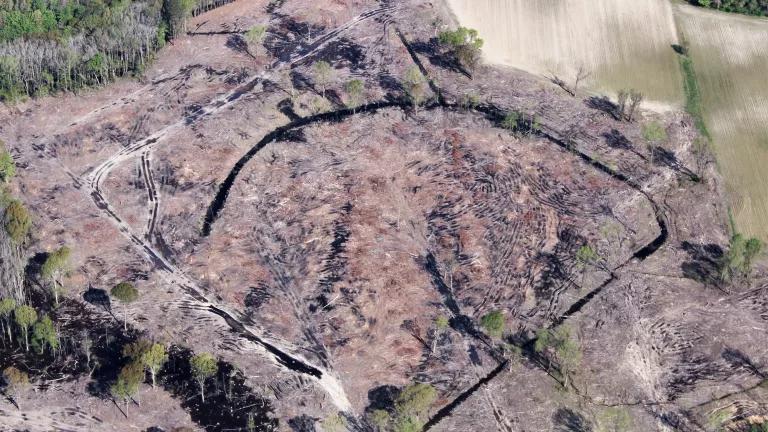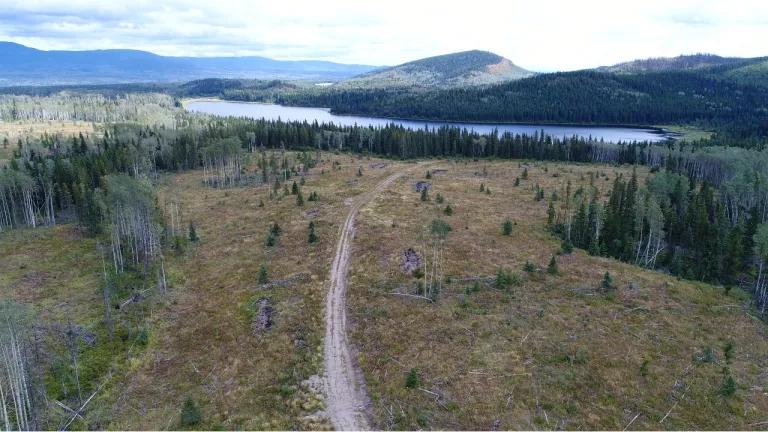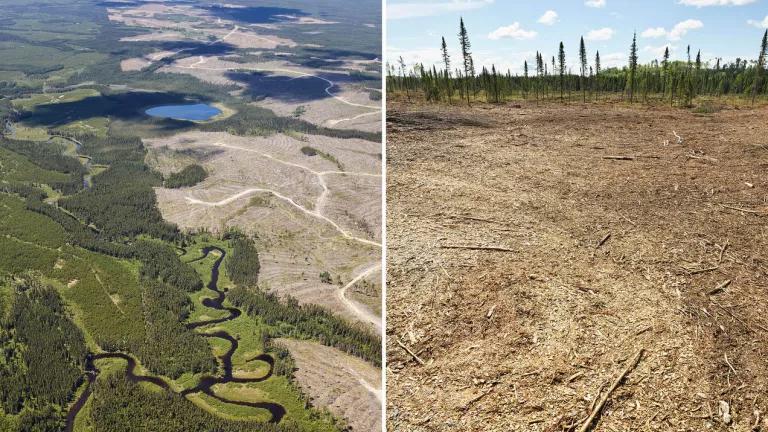
Clearcutting for biomass energy in the U.S. Southeast
(C) Dogwood Alliance
The first draft of a new treaty to help the world set global targets to restore species and habitats by 2030 was published last week. The UN’s new global agreement on biodiversity supersedes the zero draft, which expired in 2020 with none of the targets fully met. This new treaty will be examined by key governments before the next meeting of the Convention on Biological Diversity ("CBD"), where the final text will be negotiated.
With the Intergovernmental Science-Policy Platform on Biodiversity and Ecosystem Services (IPBES) predicting that one million species face extinction, many within decades, absent "transformative change," the need to restore biodiversity has never been more urgent. And one of our top priorities for restoring biodiversity must be to halt forest loss and, thus, the use of industrial scale biomass energy. Logging trees to burn for energy -- referred to as “biomass energy” -- leaves forests scarred and destroyed from the southeast US, to Canada, to Estonia and presents a major threat to the wildlife that relies on these forests.
It's also completely backwards from a climate change perspective. To have any chance of keeping the global temperature below 1.5C - the globally agreed goal - we must protect and restore climate-critical forests. Otherwise, we’ll blow past this target, even if we stop all use of fossil fuels. Cutting trees and using part or all of them for electricity releases their carbon into the atmosphere. Even if the trees regrow, scientists have long sounded the alarm that this increases atmospheric carbon dioxide for years or decades, prompting hundreds of them earlier this year to urge world leaders to end the use of forest bioenergy.
Finally, it's a waste of money that should be going to true renewables, with countries like the UK subsidizing biomass energy to the tune of hundreds of millions of pounds each and every year. Target #18 of the new biodiversity treaty suggests that subsidies that harm nature should be redirected to restore it to the tune of US $500 billion per year. This echoes the recommendations of the recent IPBES-IPCC Workshop Report to eliminate subsidies harmful to biodiversity, finding that "the money allocated to promote and conserve biodiversity is outweighed by environmentally harmful subsidies by a factor of ten."
Unfortunately, there’s a serious risk that the use of biomass electricity could expand. Most global models for cutting emissions and expanding the use of renewable energy foresee an increase in the burning of wood, including with Carbon Capture and Storage fitted to the power station. While some claim this will lock the emissions underground, analysis shows this is far from the case. A significant proportion of the emissions from biomass occur in the forest or when it is processed at a pellet plant, before it ever gets to the power station. If biomass use expands significantly, with more countries relying on it as a power source, more forests will be harmed and logging for biomass would likely spread to new regions of the world in areas where forests are already under pressure from other threats. Halting and reversing the global loss of biodiversity - achieving what many refer to as ‘nature positive’ - by 2030 will be unattainable if we don’t protect forests.
The world has recognized it’s time to leave the fossil fuel era behind. We also need global recognition that it’s time to do away with industrially logging the forests we need to avoid catastrophic climate change. Cutting down climate-critical forests is heading us down a dangerous path given they are one of our best, most efficient means of climate mitigation and their loss is turning forests carbon stores into an emissions bomb. Going one step further and burning the trees that are cut down is madness.
Governments need not wait for the UN biodiversity conference (also known as the Convention on Biological Diversity) or to sign the treaty to act on these issues. The end of using wood to generate electricity can begin today.



